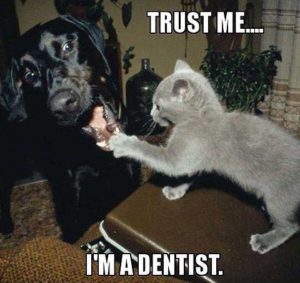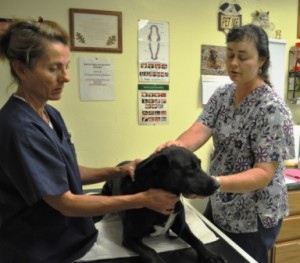 What is Brucella canis?
What is Brucella canis?
B. canis is a bacteria that can cause reproductive problems (notably abortions and stillbirths) in dogs. It is a similar organism to the Brucella abortus bacteria that causes Brucellosis in cattle, bison, and elk in the Yellowstone area.
The bacteria can be found in highest concentrations in reproductive fluids and to a lesser extent in urine, milk, blood, saliva, nasal and ocular secretions, and feces. It can be shed intermittently for months to years after the dog is infected and can survive in the environment for extended periods of time.
Although rare, humans can also contract the disease via open wounds or mucosal surfaces (inside of the eye, nose, etc.) that come into contact with the bodily fluids of infected animals. Dogs are diagnosed by a blood test.
Unfortunately, there is no known cure for the disease and euthanasia of the infected animal is currently recommended to stop the spread.
To learn more, you can download this pdf file from Iowa State University http://www.cfsph.iastate.edu/Factsheets/pdfs/brucellosis_canis.pdf









 Does your dog go nuts when outside or if it hears a noise? Maybe he just seems to have convenient hearing. Let’s go inside the minds of dogs and find out why.
Does your dog go nuts when outside or if it hears a noise? Maybe he just seems to have convenient hearing. Let’s go inside the minds of dogs and find out why.
 As Thanksgiving comes around, take time to be thankful for your pets. Sure they can be a lot of work, but the joys they bring us can be unmeasurable. They make us laugh and cry. They comfort us when we are sad and keep us company when we are alone. Sometimes they protect us and sometimes they get us in trouble with the neighbors or animal control.
As Thanksgiving comes around, take time to be thankful for your pets. Sure they can be a lot of work, but the joys they bring us can be unmeasurable. They make us laugh and cry. They comfort us when we are sad and keep us company when we are alone. Sometimes they protect us and sometimes they get us in trouble with the neighbors or animal control.



 Bathing dogs with healthy skin and hair coat can interfere with the dogs natural protective oils and disturb the delicate balance of beneficial microbes that live on the pet’s skin.
Bathing dogs with healthy skin and hair coat can interfere with the dogs natural protective oils and disturb the delicate balance of beneficial microbes that live on the pet’s skin.